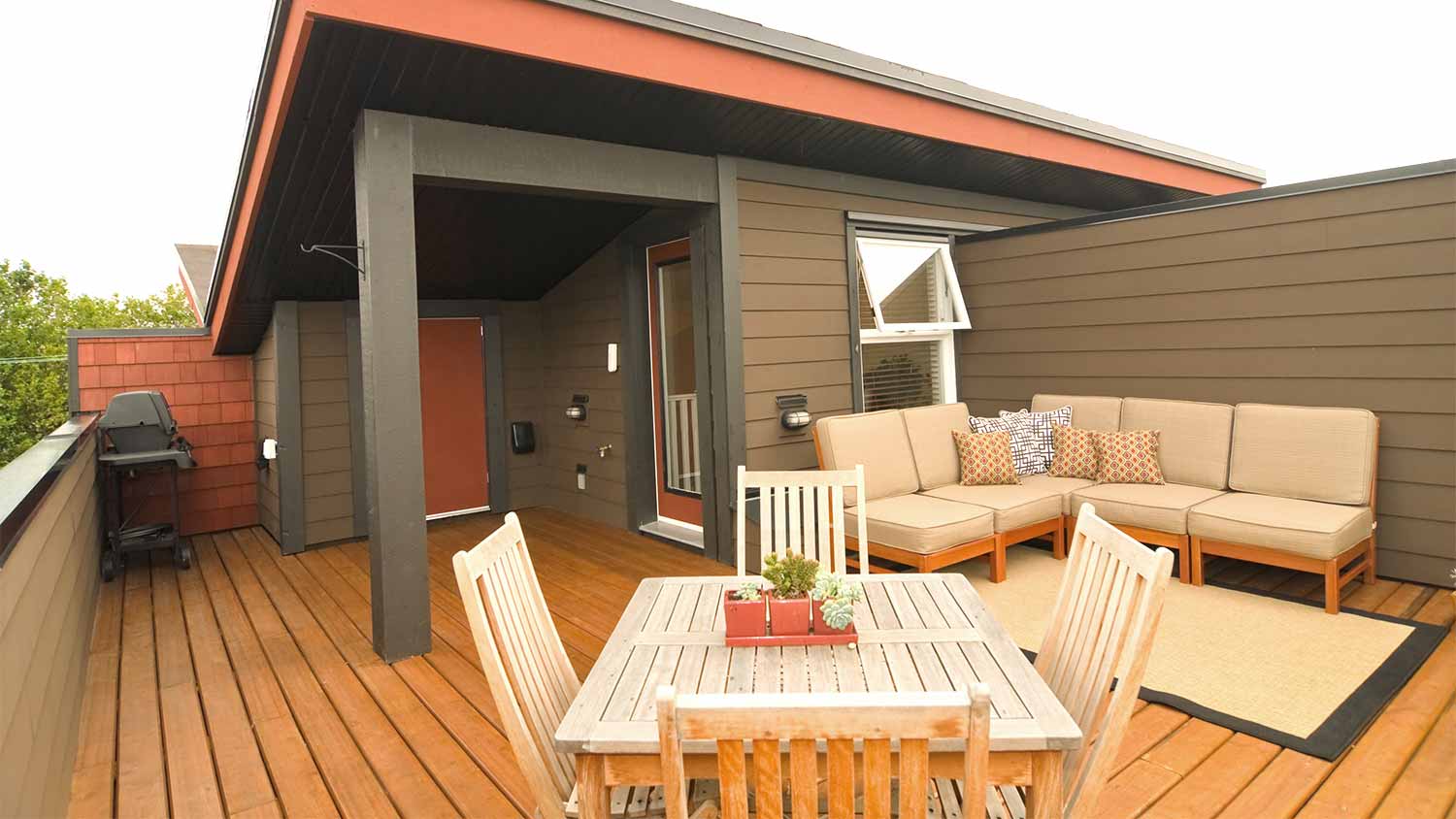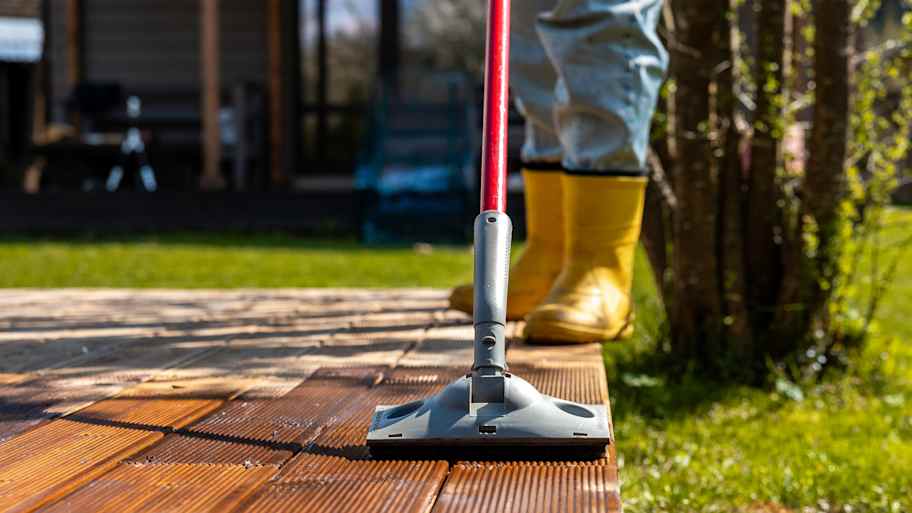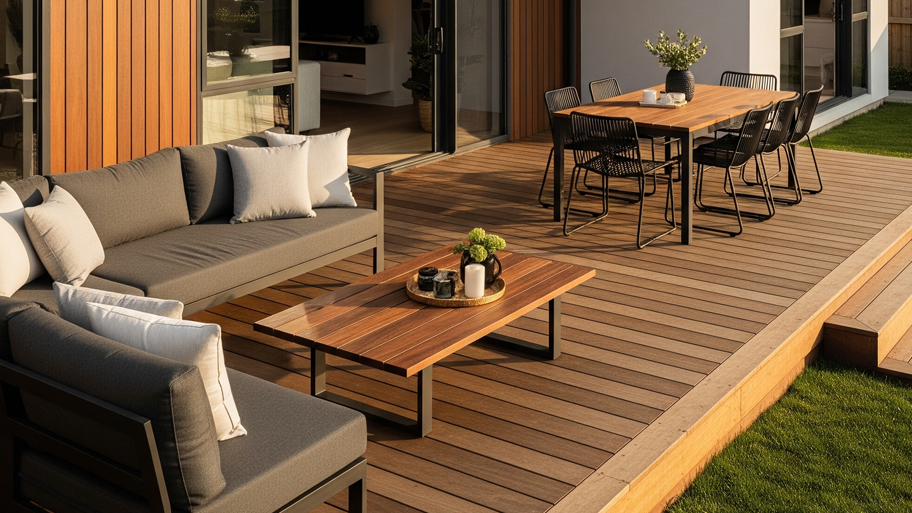
Refinishing your deck is a great way to restore its appearance and fall in love with your outdoor space. Use this guide to learn how much it costs based on factors like size and type.
The cost to build an arbor ranges from $1,600 to $3,500, with most homeowners spending an average of $2,800. Size, material, and design complexity are the main cost factors.


The final cost to build an arbor depends on factors like size, material, and whether you choose a custom or prefabricated design.
Building an arbor involves creating a decorative outdoor structure, often used as a garden accent or entryway.
Simple, standard arbors offer a strong return on investment of 50% or more by enhancing your landscape without major ongoing expenses.
For best results, consider professional installation for $50 to $120 per hour to ensure the structure is safe, sturdy, and built to last.
This article was created using automation technology and thoroughly fact-checked and edited by an Angi Editor in accordance with our AI policy.
The cost to build an arbor averages $2,800, with most homeowners paying between $1,600 to $3,500 on average. Prices vary based on size, materials, and design complexity. Expect to pay $50 to $120 per hour for a professionally built arbor, depending on your choices and location.
Whether you’re looking to create a striking entryway or support climbing plants, understanding these costs will help you plan your project confidently.
The size of your arbor is one of the biggest cost drivers. Larger arbors require more materials and labor, directly increasing the total price. Most residential arbors range from compact entryway arches to expansive garden features. Standard entryway arbors might measure four feet wide by seven feet tall, while larger garden arbors can span eight feet or more in width and height.
Custom sizes, multi-span, or extended arbors will cost more due to extra materials and complex construction. If you’re considering a unique design or a structure to cover a long walkway, expect both material and labor costs to rise.
Arbor type also plays a major role in determining cost. Freestanding arbors, attached arbors, entryway arches, garden arbors, pergola-style structures, lattice arbors, and fully custom designs all have different material and labor requirements. For example, a simple entryway arch costs less than a large, pergola-style arbor with built-in benches or planters.
Some types suit specific landscaping goals better than others. Entryway arbors frame a path or gate, while garden and pergola-style arbors create shaded seating or plant support. The complexity of your chosen type impacts both installation time and long-term value.
| Arbor Type | Average Cost |
|---|---|
| Moon gate | $600–$1,800 |
| Grape | $700–$2,000 |
| Gabled | $750–$2,000 |
| With bench | $850–$2,500 |
| Attached | $800–$4,000 |
| Freestanding | $1,000–$3,500 |
| Arch | $600–$1,800 |
Where you live affects the cost to build an arbor. Labor and material prices are often higher in urban or coastal regions, while rural areas may offer lower rates but higher delivery charges or transportation fees if materials or contractors must travel far.
Climate also influences costs—arbors in harsh weather zones require durable, weather-resistant materials, which can be pricier.
The spot where you install your arbor on your property also impacts cost. Front yard arbors or those near property lines may need additional permits or more decorative finishes. Backyard or garden arbors are often easier to access, but installations over slopes, rocky soil, or hard-to-reach areas require more labor and materials for site prep like yard grading, increasing expenses.
If your chosen location is difficult for equipment or workers to reach, labor costs may rise due to extra time spent on preparation or transportation.
Arbor installation costs break down into several key factors that influence your total investment.
Labor is a significant part of the cost to build an arbor. Professionals involved may include landscapers, carpenters, or general contractors. Fees range from $300 to $1,500, with hourly rates ranging from $50 to $120 depending on experience and region.
Flat-rate pricing is common for standard builds, while custom projects may be billed hourly. Labor costs are higher for custom or complex arbors, and often cover site prep, assembly, and finishing.
Permits are needed for many arbor projects, especially larger structures or those attached to homes. Permit fees range from $50 to $300, with additional inspection costs possible. Failing to obtain proper permits may result in fines, required removal, or issues when selling your home. Always consult your local building authority before starting construction.
Add-ons like integrated benches, planters, or outdoor lighting will increase your project’s cost. Decorative latticework, custom carvings, or upgraded anchoring such as concrete footings also add to your expenses. Applying paint, stain, or weatherproofing treatments will involve both material and labor costs, but can extend your arbor’s lifespan.
Project complexity, such as curved designs or multi-span arbors, raises both material and labor costs. Site prep needs—grading, excavation, or debris removal—may require additional equipment or disposal fees.
Delivery charges apply for heavy or bulky materials, especially to remote sites. If you hire a designer or architect, design fees can range from $200 to $1,500. Inspection fees for code compliance may also apply.
Building an arbor comes with a few extra expenses beyond installation.
Some contractors or manufacturers offer warranties on materials or workmanship, often included in the price or available for an added fee. Warranties often cover structural issues, premature wear, or installation defects. Always clarify what is included before committing.
Ongoing costs are generally low, but if your arbor includes lighting or irrigation, expect a small increase in utility bills. Solar-powered lights can help minimize long-term expenses.
Maintenance depends on your arbor’s material. Wood requires periodic sealing, staining, or painting ($200 to $500 per year), and may need occasional repairs for rot or pests. Metal and vinyl arbors need less upkeep, though you should inspect for rust or cracks. Replacing damaged parts or hardware can add to long-term costs.
Sales tax on materials and labor may apply, depending on your state and municipality. Outdoor structures could also impact your property tax assessment in some areas.
A large or custom arbor may affect your homeowner’s insurance premium, especially if installed near property lines or public walkways. Additional liability coverage might be needed for structures accessible to the public or with electrical features.
You can build an arbor yourself or hire a professional, and each approach has distinct cost implications.
DIY projects cost less in labor but require you to purchase all materials ($400 to $600 for an arbor kit) and possibly rent or buy tools like saws, drills, or post-hole diggers ($50 to $300). You’ll also need safety gear and time for planning, building, and finishing—expect to spend a weekend or longer, especially for larger or more intricate designs. DIY is best for those with solid carpentry skills and basic construction knowledge, but mistakes can lead to structural or code issues.
Hiring a pro increases upfront costs but provides peace of mind, a warranty, and a high-quality finish. Pros handle site prep, assembly, and code compliance, reducing your risk of costly errors. For complex or large arbors, or if you lack construction experience, professional installation is strongly recommended.
Sometimes, repairing an existing arbor is possible; other times, replacement is the better investment.
Minor issues like loose joints, cracked paint, or small areas of rot can often be repaired. However, if your arbor has extensive rot, structural failure, or is outdated and cannot be safely restored, replacement is more cost-effective. The age, material, and warranty status all affect your decision.
Repairing an arbor may cost $150 to $600 per component. Full replacement for a similar size and style often ranges from $1,600 to $3,500. If repair costs exceed 50% of replacement costs, replacement is usually the better choice for safety and long-term value.
Installing an arbor can add tangible and intangible value to your property.
Homeowners often see a return on investment of 50% or more for well-designed, professionally installed arbors. These structures boost curb appeal, define spaces, and create inviting entryways or garden features. Compared to other landscaping upgrades, arbors are a relatively affordable way to enhance outdoor living.
Several elements impact the value an arbor adds:
Safety and structural soundness
Low-maintenance materials and finishes
Functional benefits like shade or plant support
Accessibility and universal design for all users
Integration with your landscape’s overall style
A sturdy, attractive arbor that’s easy to maintain and complements your property will offer the best return.
Consider these cost-saving strategies to make your arbor project more budget-friendly:
Choose more affordable materials like pressure-treated wood or vinyl.
Opt for a standard size or prefabricated kit to save on custom design fees.
Schedule installation during the off-season for potential labor discounts.
Handle site prep or finishing tasks (painting, staining) yourself.
Get multiple quotes from local arbor and pergola pros to compare pricing and services.
Combine arbor installation with other landscaping work for potential savings.
Prevent costly repairs by keeping up with maintenance.
Home is the most important place on earth, which is why Angi has helped more than 150 million homeowners transform their houses into homes they adore. To help homeowners with their next project, Angi provides readers with the most accurate cost data and upholds strict editorial standards. We extensively research project costs to develop the pricing data you see, so you can make the best decisions for you and your home. We rely on reputable sources, including the U.S. Bureau of Labor Statistics, academic journals, market studies, and interviews with industry experts—all to ensure our prices reflect real-world projects.
Want to help us improve our cost data? Send us a recent project quote to [email protected]. Quotes and personal information will not be shared publicly.
From average costs to expert advice, get all the answers you need to get your job done.

Refinishing your deck is a great way to restore its appearance and fall in love with your outdoor space. Use this guide to learn how much it costs based on factors like size and type.

If you’re updating a deck or staircase with a modern railing, you may be wondering how much cable railing costs. We dive into the cost factors you need to know.
Deck repair costs depend on materials, damage you need to fix, and more. See how much it costs to replace or repair a deck in Columbus, OH.

Discover rooftop deck costs, key price factors, and ways to save. Learn what impacts rooftop deck installation costs and how to budget for your project.

Homeowners often wonder what causes deck stain to peel. Discover the best ways to address deck peeling issues.

Outdoor living structures such as porches, stoops, decks, and patios are all common ways to make your house stand out. Here’s the difference between the four types of structures and what to consider when building one for your home.